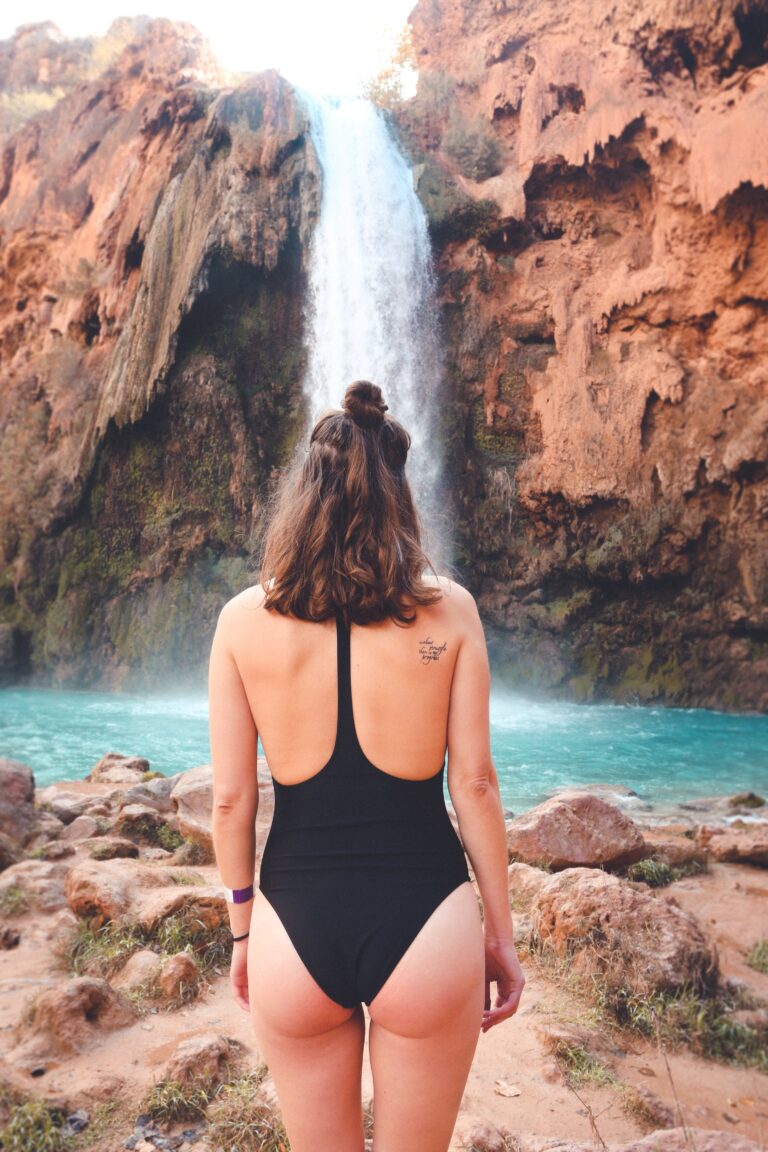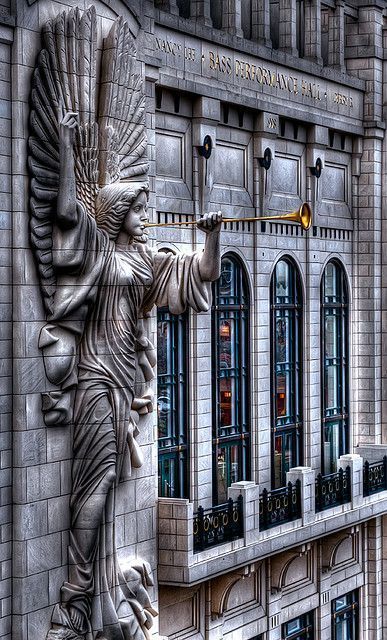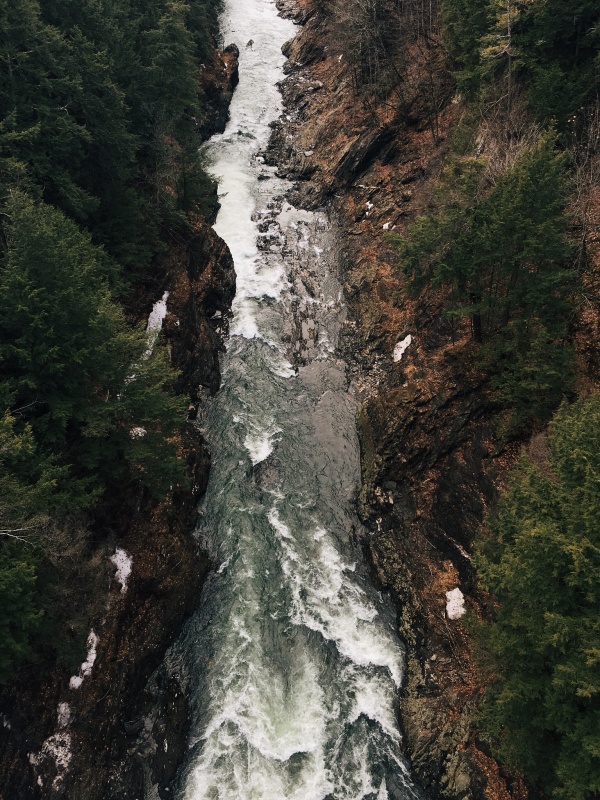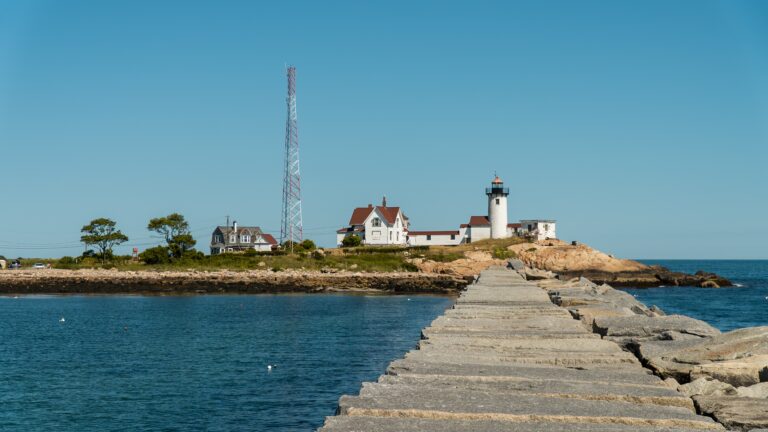The Ultimate Guide To Hiking The Colchuck Lake Trail
In Washington State’s Alpine Lakes Wilderness Area, the Colchuck Lake Trail is steep and rugged, but anybody who can manage the 2,300-foot elevation rise will be rewarded with breathtaking views.
And the Colchuck Lake Trail is seriously gorgeous, especially when you break through the woods and glimpse that deep turquoise lake for the first time. Then, as you descend to the coastline, the vista expands even more, with Dragontail Peak towering above. You experience the moment that every hiker dreams about: the one when time slows down and nature reminds us of our position in the world.
Colchuck Lake Trail is one of the most well-known hikes in Washington State. It has been on our bucket list for years, and we finally made the time a few summers ago.
Hiking the Colchuck Lake Trail requires planning, particularly concerning scheduling, permits, parking, and preparation. So we’re writing this article to give you all the information to hike the Colchuck Lake trail successfully.
Overview of the Colchuck Lake Trail
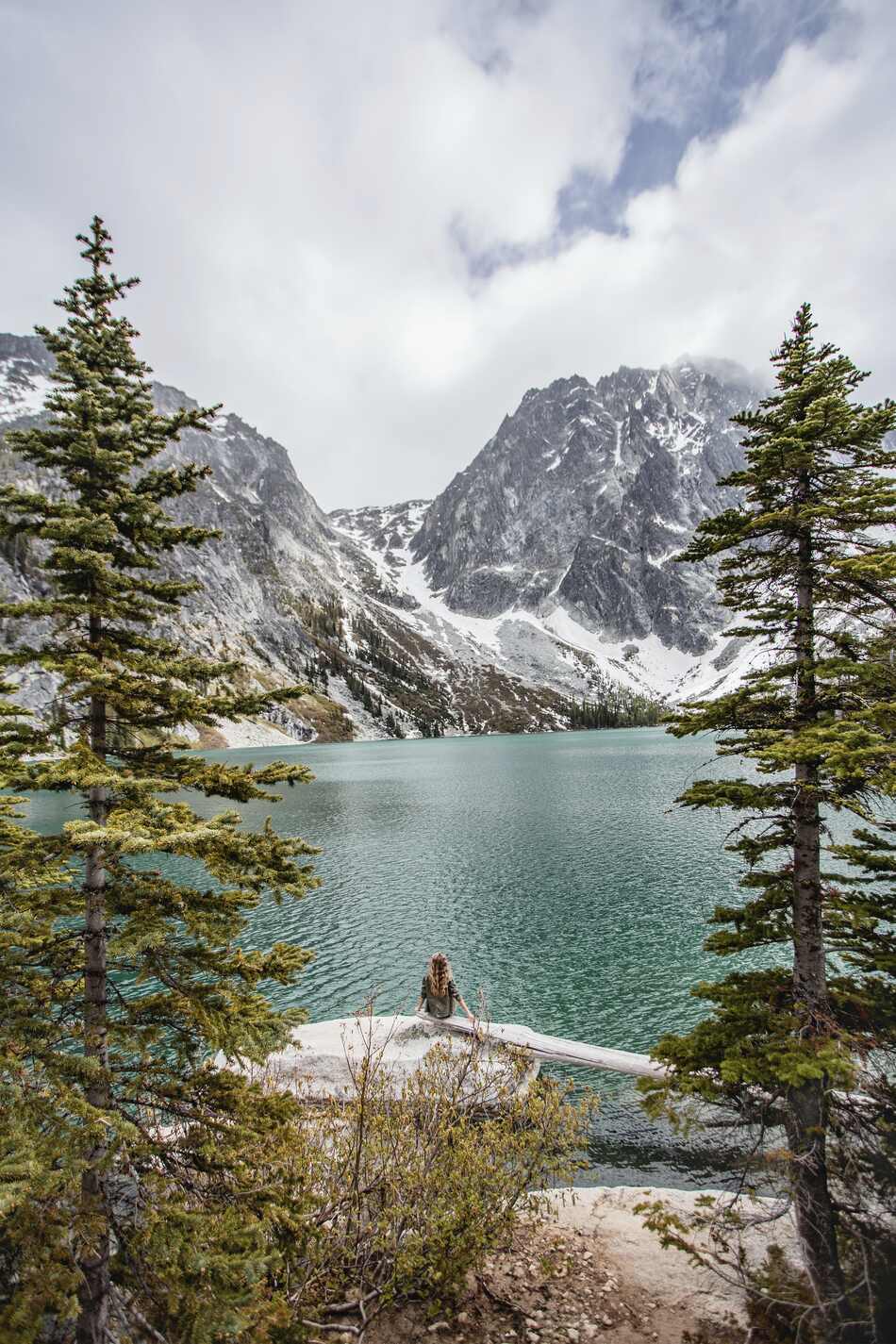
Here’s a brief rundown of the Colchuck Lake Trail near Leavenworth, Washington, before we get into the meat of the trip.
Highlights: One of the gorgeous lakes along the main Enchantments trail is Colchuck Lake. The green and blue lake is breathtaking, and the Dragontail and Colchuck peaks provide a dramatic background.
Distance: 9 miles out-and-back
Difficulty: Challenging
Elevation Gain: 2,283 feet
Land: Alpine Lakes Wilderness Area
Trailhead Location: Turn south on Icicle Road from Leavenworth’s west end on Highway 2. After about 8.4 miles, go left onto Forest Service Road 7601 (FR-7601). The 3.7-mile gravel road to the Stuart Lake trailhead is sometimes tricky and steep.
Hiking Time: It typically takes 4 hours and 34 minutes to finish.
Passes: A valid Recreation Pass is required at the Stuart Lake trailhead.
Permit Info: Permits into the Alpine Lake Wilderness are needed. At the trailhead, they are self-issued. Special overnight permits are necessary for the unique Enchantments Area from May 15 to October 31.
Restrictions:
- Wilderness Trail is a non-motorized trail that does not allow bicycles.
- The maximum number of people per group is eight.
- Dogs are not permitted on the Colchuck Lake trail, Stuart Lake trail, and the Enchantment Permit Area. All pets, including dogs, are restricted.
- Campfires are not permitted.
- Stock is no longer allowed on the trail.
- Colchuck Lake has designated hiker campsites.
When to Hike Colchuck Lake
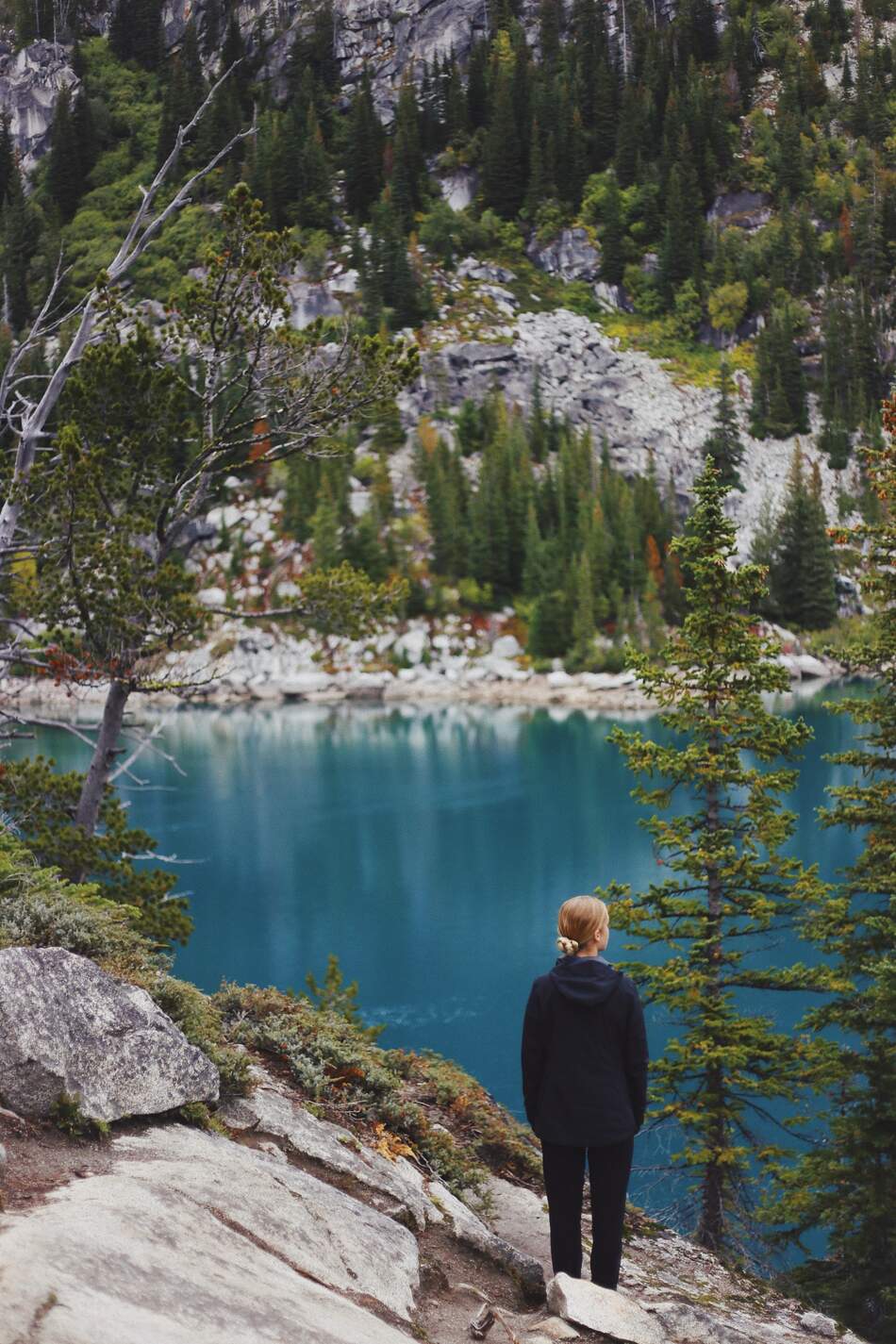
From November through May, FR-7601 is closed; particular dates vary year to year based on snowfall, so check the forecast before going out. Snow is likely to fall by November 1 in the fall and until June 30 in the summer. We don’t recommend going this in May since the trek and drive will still be snowy.
Summer and October are undoubtedly the best times to visit Colchuck Lake.
Deciduous conifers may be found all around the lake, at the foot of Asgard Pass, and amid the evergreens. To the inexperienced eye, alpine larches, sometimes known as tamaracks by locals, seem to be little evergreen trees.
The needles of these ordinary-looking trees become a dazzling, golden yellow by the middle of October, while tints of blue and green predominate throughout the summer. It’s as if Bob Ross was painting a landscape and used yellow instead of green and then went all in.
The tough larches are also among the most extraordinary survivors at this elevation, making for a stunning color contrast against the rocky backdrop.
If you’re visiting Colchuck in October, we suggest staying in Leavenworth and spending time along the river, where the golden motif continues. It’s a lovely time to visit! What’s more, Oktoberfest is a must-attend event.
Getting to the Trailhead

From Leavenworth, you have to turn onto Icicle Creek Road from US2 to get to the trailhead. Turn left onto FR-7601 after 8.4 miles. The Stuart Lake trailhead is 3.7 miles along a rough, occasionally potholed dirt road.
For roughly 6 miles, take I-5 North to WA-520 East toward Bellevue/Kirkland if you are from Seattle. Then take I-405 North for approximately 8 miles after crossing the lake (there is a toll). If you want to avoid paying the WA-520 toll, take the I-90 bridge south and then take I-405 north. After that, take exit 23 and join onto WA-522 East for about 13 miles, staying in the far right lane. For approximately 85 miles, merge onto US-2 East, taking you over Stevens Pass and into Leavenworth. Follow the instructions above from Leavenworth.
Note that FR 7601 from Icicle Creek Road to the trailhead shuts throughout the winter, usually from November to May, resulting in a limited hiking season in the summer.
Parking at the Trailhead
The first thing to remember is that parking for this hike is quite limited, particularly during the summer weekends.
You’ll need an annual Northwest Forest Permit, which you can purchase at the parking lot entrance.
We recommend coming early to avoid parking a mile away from the trailhead. There is enough room for 20-35 cars, depending on how skillfully the early birds organize their vehicles. Overnighters with special permissions can park in about half of the lot.
Remember that this is a well-guarded area. You will get penalized if you park without a pass. Also, you’ll receive a penalty if you park in an overnight area with a pass but no overnight permission.
Between the Stuart Lake and Eightmile trailheads, there is parking along the right side of the forest service road.
Hiking Colchuck Lake
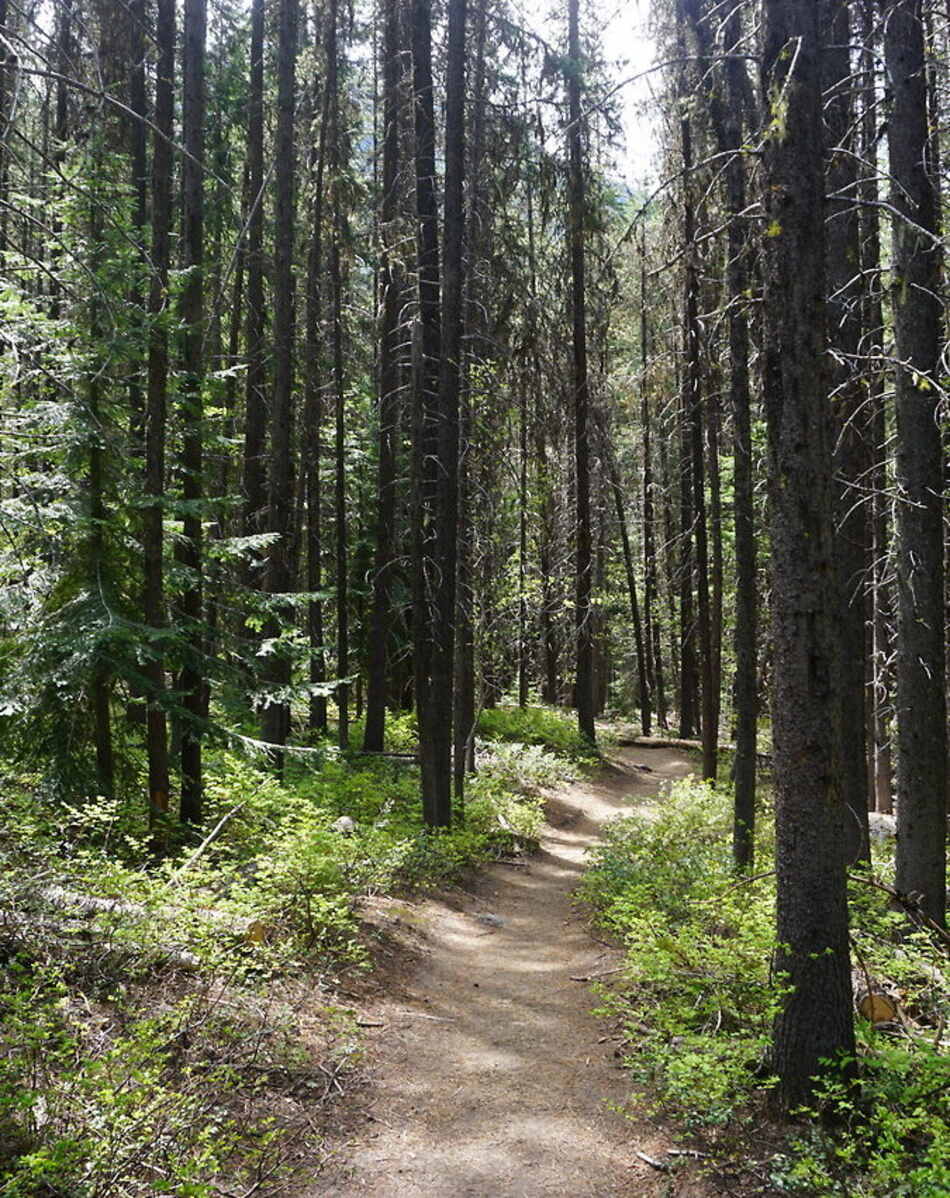
It’s a religious experience to turn the curve and emerge from the woods at Colchuck Lake for the first time. The lake’s icy waters are suddenly spread out before your feet — deep blue in the shade, dazzling aquamarine in the day — while the twin spires of Dragontail and Colchuck Peaks, far above you at the other end of the lake, appear to blot out the very sky.
While the final approach to the lake is steep and rugged in parts, the cumulative elevation increase of 2,300 feet makes Colchuck’s beautiful landscape accessible to hikers of all abilities. The trailhead parking area and the road leading to it are packed with vehicles in the summer.
As if Colchuck Lake wasn’t already enticing enough, it’s also one of the two entrances to the Enchantments. Additionally, the trailhead leads to Stuart Lake, a less demanding but equally beautiful destination.
The Beginning of the Hike
The Stuart Lake Trail #1599 is an excellent place to start. Within hearing and occasionally sightline of Mountaineer Creek, the first mile and a half rises steadily through woodland, first thick and gloomy, then thinner and brighter. On occasion, you can view the valley’s sheer cliffs through gaps in the woods.
The trail crosses to the right bank of Mountaineer Creek over a solid log bridge at the end of the first mile and a half. Hikers can get some welcome reprieve from the wind coming off the roaring whitewater of the stream by standing near the midway of the bridge on hot days.
The trail steepens and becomes rockier after the bridge, giving you a taste of what’s to come in the hike’s second half.
The Second Half of the Hike

The trail flattens out and dips after three-quarters of a mile before reaching a trail intersection. The route to Stuart Lake continues straight ahead, while the Colchuck Lake Trail branches off to the left.
Following the path to the left, you will come to another log bridge that will carry you over a narrow, turbulent portion of Mountaineer Creek after a short length in the forest. As you leap stones in a significant talus slope along the creek’s side, the trail becomes a mess. You’re again at the stream a little while later, but its waters are sparkling smooth; a good area for a quiet rest before resuming your ascent.
The hike is gentle at first, but it becomes steeper and rockier as you approach closer to the lake.
Views of the valley you’ve just climbed out of open up at numerous points along the trip, first to the valley you’ve just climbed out of, then up to the toothy ridge of Dragontail Peak. The trail jogs to the right after one last steep section, descends into a bit of swale, and suddenly you’re at one of the best lake vistas in the Cascades.
Reaching Colchuck Lake
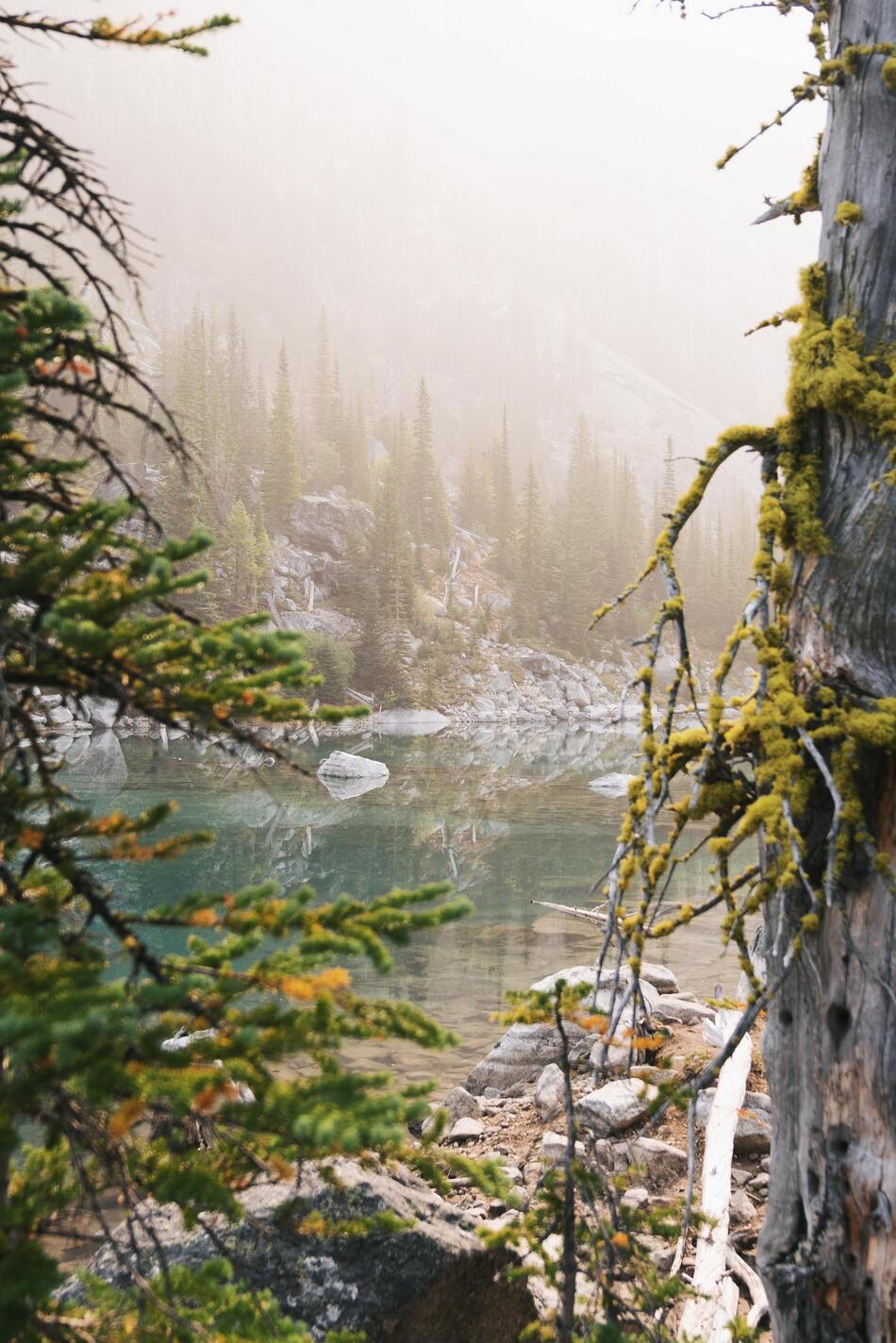
The trail ends at a large granite face with a lake view. It is a fantastic spot to have a bite to eat while admiring the environment.
The majestic peak of Dragontail Peak is seen across the lake. Aasgard Pass, located to the left of Dragontail, is the very steep “shortcut” to the Enchantments. The Colchuck Glacier remains to the right, as do the slopes of Colchuck Peak, with its absolute top hidden by granite towers.
If you still have the energy, the Colchuck Lake trail continues for another two-thirds of a mile along the shoreline, sometimes uneven and difficult to follow. At a big tarn, one of the least visible route junctions occurs — it’s typical to follow the well-trodden dirt to the right, but the trail follows rocky slopes to the left.
After a series of curves and ups and downs through the forests, the track comes to a rock field at the Colchuck Glacier’s terminal moraine base. Subalpine firs give place to larches here, and the official trail gives way to a rock-hopping approach that leads to Aasgard Pass.
Where to Stay Near Colchuck Lake
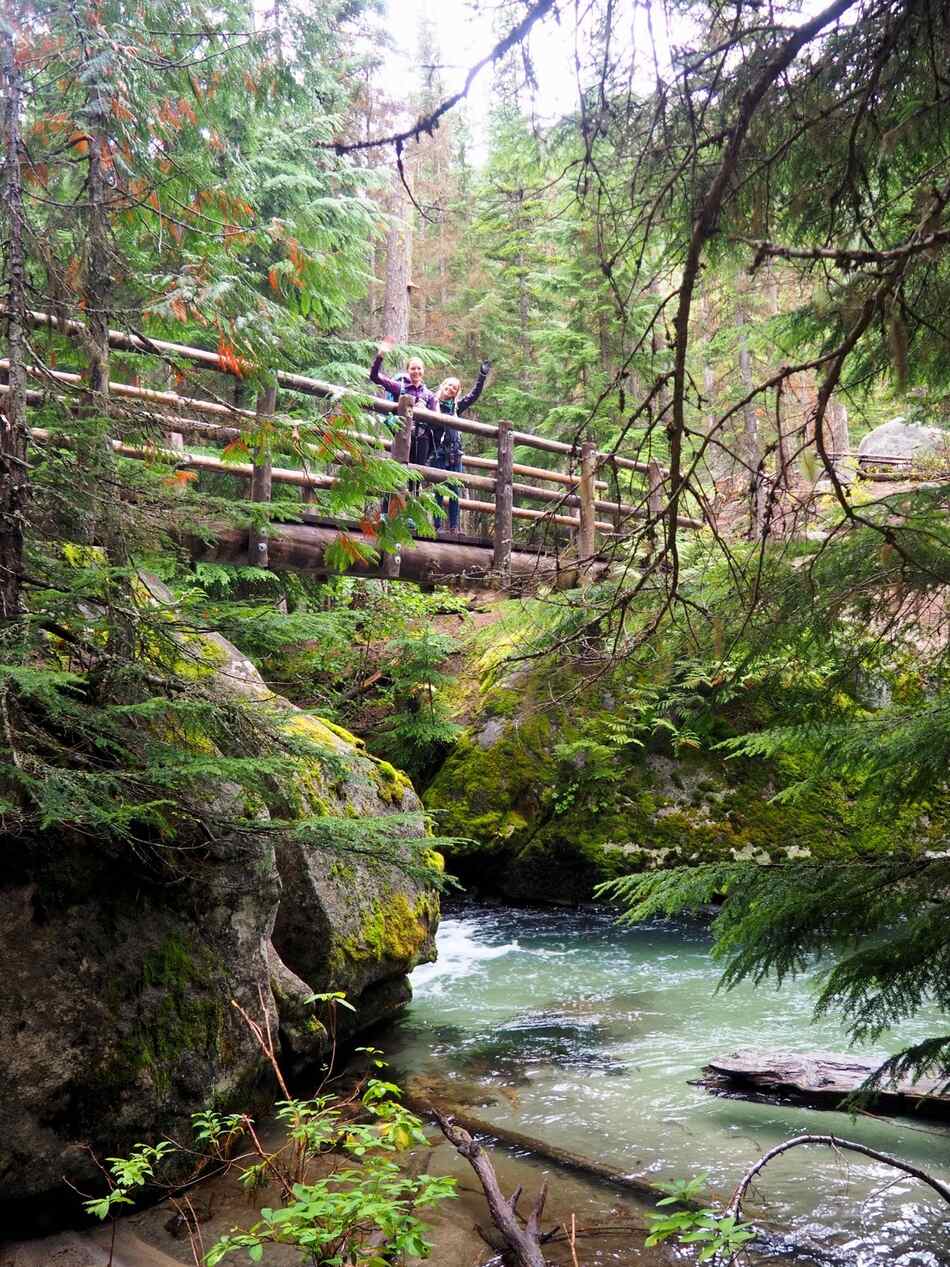
There are several lodging alternatives available near the Colchuck Lake trail, depending on your preferences. Remember that the campgrounds are close to downtown Leavenworth and should be on your itinerary. A day is not enough to explore this Bavarian beauty!
Here are the options where you can spend the nights:
Camping
Two camping alternatives will allow you to wake up, park at the trailhead, and hit the trail.
Bridge Creek: Only six spots are available, and they are all first-come, first-served. They also offer specific group sites that you must reserve ahead of time.
Eightmile Campground: This bustling campground, situated 8 miles out of town and off Icicle Creek, is available for tent and RV camping and offers a 60/40 mix of reserved and first-come, first-served spaces.
Hotels Near Leavenworth
From large hotels to tiny B&Bs, there are many fantastic places to stay in and around the Bavarian town of Leavenworth.
Abendblume: It is a small Bavarian retreat with old-world charm, featuring seven individual rooms and a complimentary traditional Austrian breakfast.
Downtown Loge: With a beer garden and café on-site and full access to the Riverside outdoor amenities, the classic hotel rooms can accommodate 2–4 people. Seasonal pricing varies.
Mountain Resort Sleeping Lady: This quiet resort, located on Icicle Road outside of town, provides rustic private accommodations, gourmet cuisine, spa services, and a gift store.
Riverside Loge: It has private 2-person cottages overlooking the river with common fire pits, green lawns, and an outdoor kitchen with a Traeger beckoning. Seasonal pricing varies greatly.
Packing List for the Colchuck Lake Experience
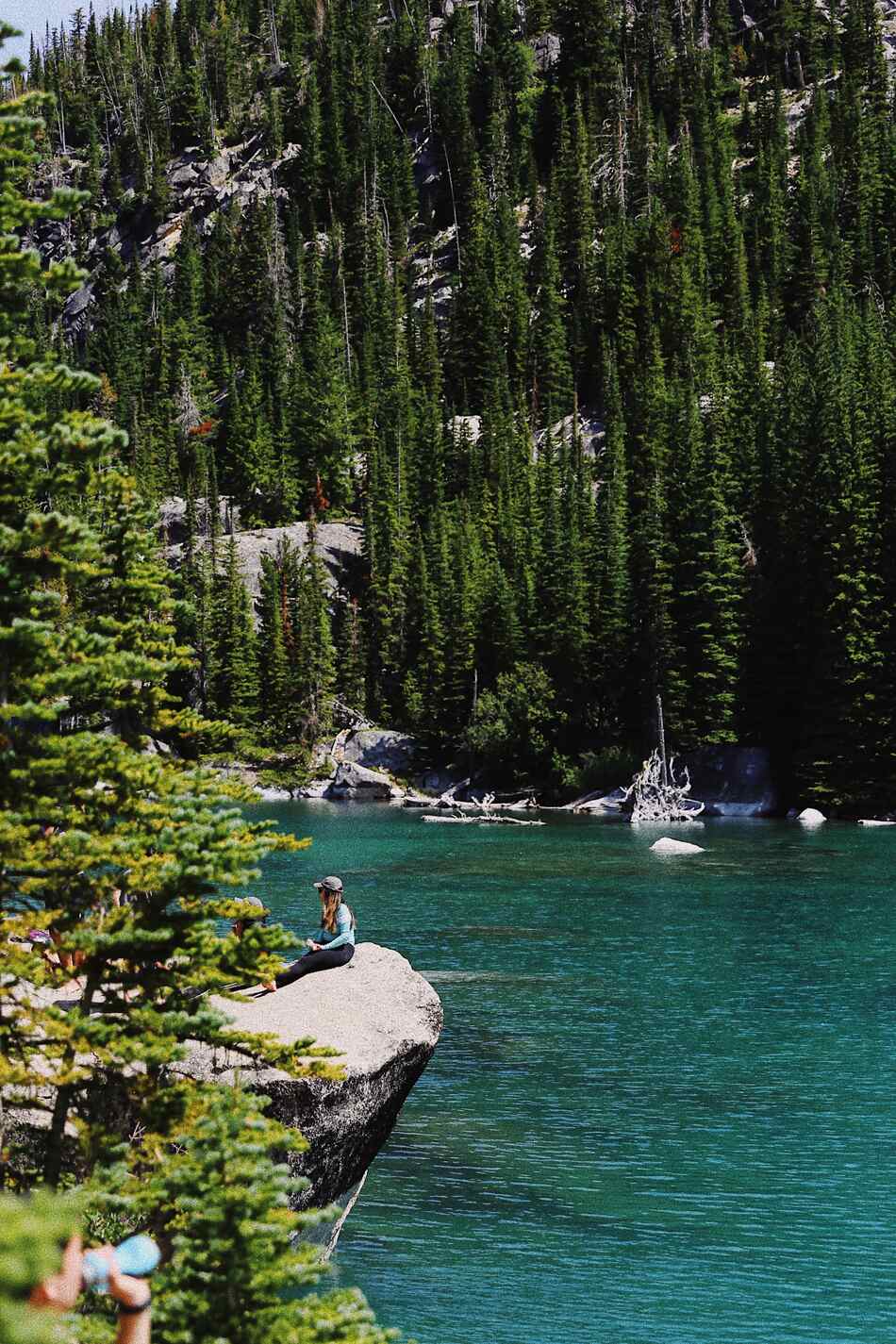
While backpacking expertise is not required for hiking the Colchuck Lake, we would strongly advise having someone in your company who is familiar with the ins and outs of backpacking and can advise you on gear. You want to be prepared for the Colchuck Lake trail hike!
Here are the things you should bring for hiking Colchuck Lake:
Tent: You’ll want to make it for a group of two to three people and keep it light. Yes, it is more costly, but it is well worth it.
Sleeping Bag: You generally won’t need to go below 25 degrees unless you’re in the fall.)
Sleeping Pad: Consider the following factors: weight, size, R-Value (how warm it will keep you), and toughness.
Water Filter: On every backpacking trip, this is a must-have. You have the option of using a gravity filter or a pump. We choose gravity filters because they are simple to use.
Quality Backpack: Yes, this is something you should indulge in. You want to be able to walk with ease. We suggest a 55L to 65L backpack if you’re traveling for four days.
Hiking Boots: We suggest high ankle boots protect your ankles when climbing Asgaard Pass. The gravel and dirt may be slippery.
Hiking Poles: It comes highly recommended by us. Any brand would suffice.
Cooking system: Of course, you need it to cook food.
Fuel: For one journey, a tiny can will do. It is something you’ll have to get from a shop.
Food: Dehydrated meals from Backpackers Pantry or Mountain House are also attractive options. It’s a must-have for refueling meals. Breakfast and lunch might be less expensive and lighter options.
Clothes: Hiking base layers, Midlayers, Outershell, Socks, Hiking Pants, Short, Leggings, and Hat/Beanie
First Aid Kits: Rather than purchasing a ready-made kit, we recommend assembling it yourself.
Other items that are useful on the Colchuck Lake trail:
- Towel
- Sunglasses
- Sunblock
- Hand Sanitizer
- Toilet Paper
Nice To Have but Not Required
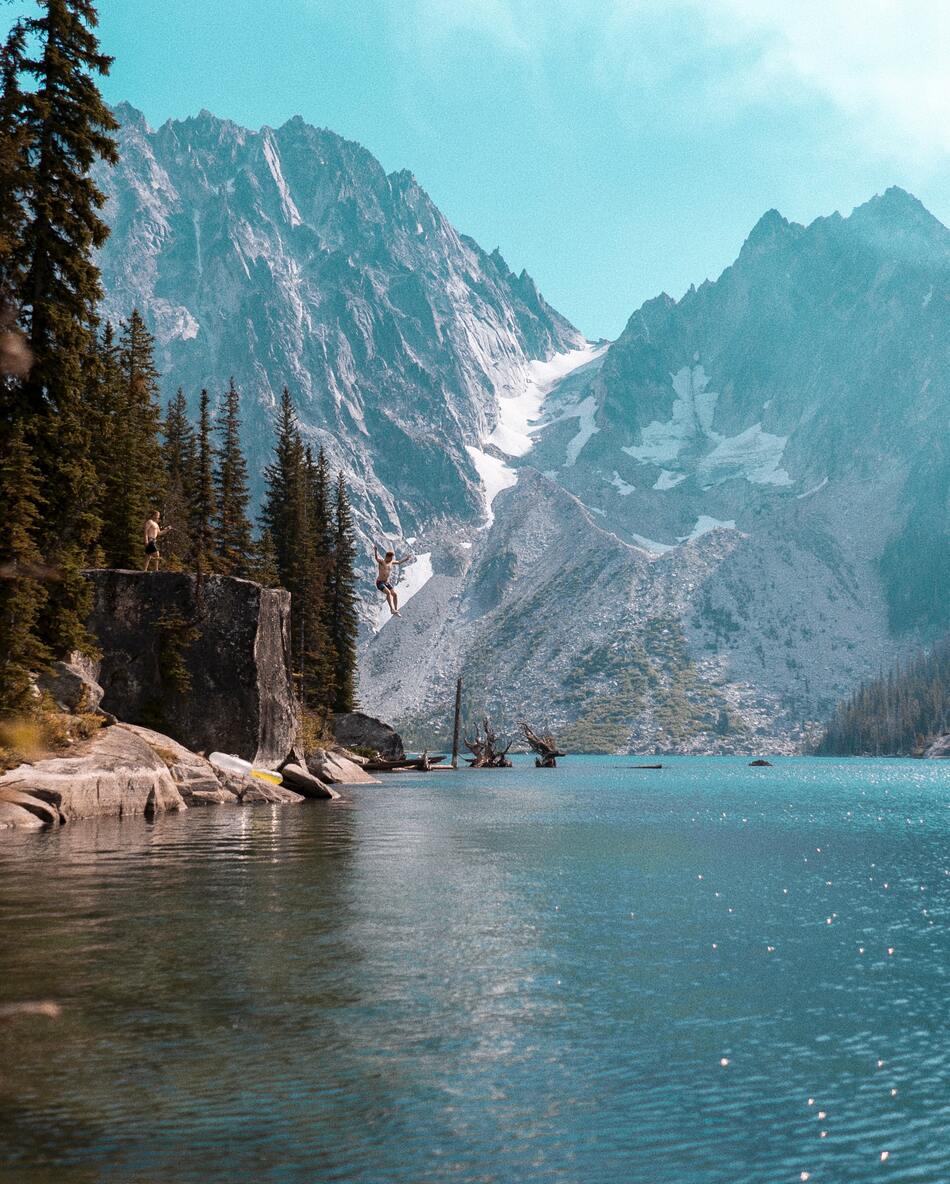
These things are nice to maximize your experience, but they are not required. Some of these are especially useful if you’re hiking the Colchuck Lake trail in the winter.
- Microspikes
- Ice Axe
- Binoculars
- Helmet
- Pillow
- Camera and Accessories
- Hammock
- Insulated Water Bottle
- Bug Head Net
- Bear Spray
- Bug Spray
- Portable Charger
- Sandals
- Swimsuits
Everyone is unique. Some people prefer a more significant load and a more luxurious camping experience. Some people like to travel light and rough it. There is no such thing as a correct response. Decide on whatever makes you feel most at ease!
Additional Information You Should Know About Colchuck Lake
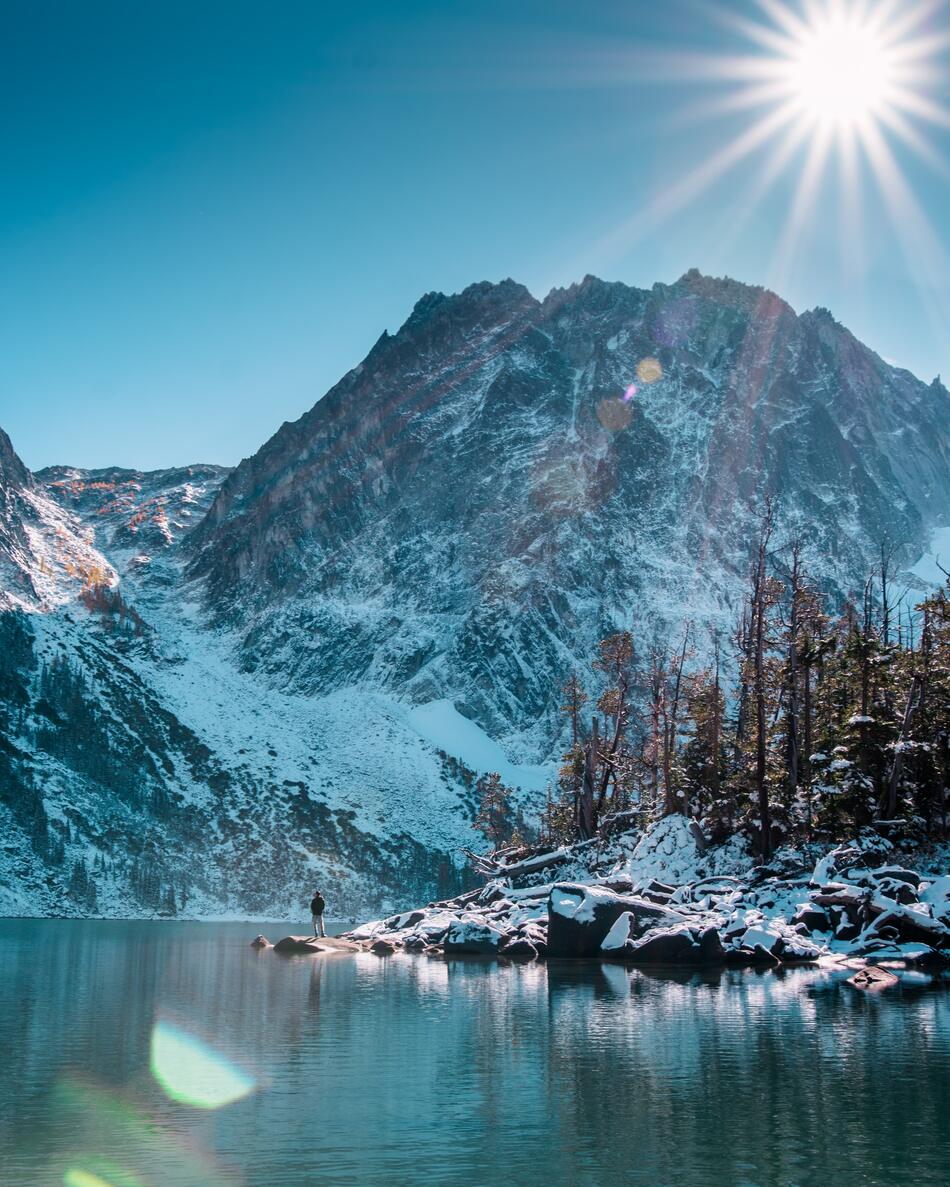
We’ve included this section with more information on Colchuck Lake for your convenience.
What Are the Enchantments?
The Enchantments are a Central Cascades area with some of the country’s most extraordinary hiking. Because the Enchantments Trail is 23.5 miles lengthy, most people backpack the trail over many days. However, you will need an overnight permit to camp.
Due to the trail’s popularity, only a few overnight camping permits are available via a very competitive lottery. Each year, these licenses are necessary from May 15 to October 31. Some people choose to trek the Enchantments in a single day, covering the whole 23.5-mile trail. It is something we’ve known individuals to do, and it’s not for the faint of heart.
If you intend to trek the Enchantments from beginning to end, be sure you have enough hiking experience and are physically fit enough to complete the journey.
When Must You Arrive at the Trailhead to Park at Colchuck Lake?
The parking area quickly fills up with hikers heading to Colchuck Lake, Stuart Lake, and the Enchantments. As a result, plan to arrive early, particularly if you’re hiking on the weekend. We arrived in the parking lot around 6:50 AM on a Tuesday in August.
About a dozen parking spaces remained, and many cars approached the road behind us. By 7:30 AM, we’d guess that the parking lot was completely packed. Although we did not hike on the weekend, trip reports indicate that the optimal time to arrive is between 5 and 6 AM.
Is It Possible To Swim at Colchuck Lake?
You can swim in the lake throughout the summer. We packed our swimsuits, but the water was much colder than imagined. Rather than that, we bathed our feet after a lengthy stroll. Some individuals leap into the water! Bring dry clothing and a towel to restore your body heat swiftly.
What Kind of Animals Will You Encounter?
There were a few deer and a slew of chipmunks that you could see. The chipmunks are somewhat pushy as they will attempt to eat your meal. Several of them may approach you exceptionally near to you. It is very vital not to feed wildlife! You can also encounter a mountain goat or two on your trip if you’re fortunate!
Some hikers reported that they observed a black bear near the trailhead. Generally, it’s good to speak loudly not to startle a bear. Just in case, bring bear spray with you.
Is There a Toilet Nearby?
There are pit toilets at the trailhead and the lake itself. Just bring hand sanitizer and toilet paper with you.
Tips for Hiking Colchuck Lake
If you’re planning to visit the Colchuck Lake Trail, you should have a few critical considerations. Here are tips for a successful Colchuck Lake Hike:
Arrive Early
Arrive early in the morning to see the most extraordinary dawn views and secure a parking spot. The parking lot quickly fills up, and you’ll have to locate another location to park your vehicle. If you don’t intend on staying the night, it’s also a good idea to start the trek early in the morning, tour the whole area, and return home safely by sunset.
Check the Weather
Check the weather forecast and trail conditions before heading out to the Colchuck Trail Hiking. Your journey will be considerably more pleasurable and relaxing if the weather is pleasant. Make sure you choose the appropriate option based on the current weather conditions at Colchuck Lake Trail.
Follow the Hiking Directions Map
Although the journey to Colchuck Lake is not difficult, it is essential to follow a map to get there and then continue on the trail. Trails may be challenging and hard to manage, and you can sometimes get disoriented. That is why it is critical to adhere to a map.
Wear Your Hiking Boots
Hiking boots have more ankle covering, which helps avoid ankle sprains, and firmer midsoles, which give more support. When hiking, it’s risky to wear classic sneakers or tennis shoes since you risk spraining your ankle and injuring yourself.
Hike Between July and October
July to October are the most lovely months at Colchuck Lake. Extreme winters can be hazardous and exceedingly cold due to the snow. In contrast, intense summers can be humid and sweaty. Thus, we recommend visiting between July and October.
Bring Water With You
When planning a journey, ensure that you bring several bottles or cans of water with you. While you may not feel thirsty while exploring the lake, going along the trail may be strenuous, and you will undoubtedly need to drink water. So, bring your water bottles with you in your bag.
Don’t Forget Sunglasses and Sunscreen
It is vital to use sunblock and sunglasses when hiking on the Colchuck Lake Trail. If you are not used to wearing sunglasses, ensure that you apply sunscreen. Due to the heightened trail, your skin might get quite tanned by the end of the day. So, don’t forget sunglasses and sunscreen if you don’t want that to happen.
Final Thoughts
The Colchuck Lake Trail has several challenges. The path is often steep and rough, so take caution—plan with the weather in mind.
Don’t forget to use a map. New areas might be confusing, and you don’t want to get lost. It definitely pays to plan ahead when hiking the Colchuck Lake trail.
After all, Colchuck Lake is one of the most stunning alpine lakes ever, and it’s worth the effort!
We hope this post helps assist in your preparations for hiking the Colchuck Lake Trail. Enjoy!
